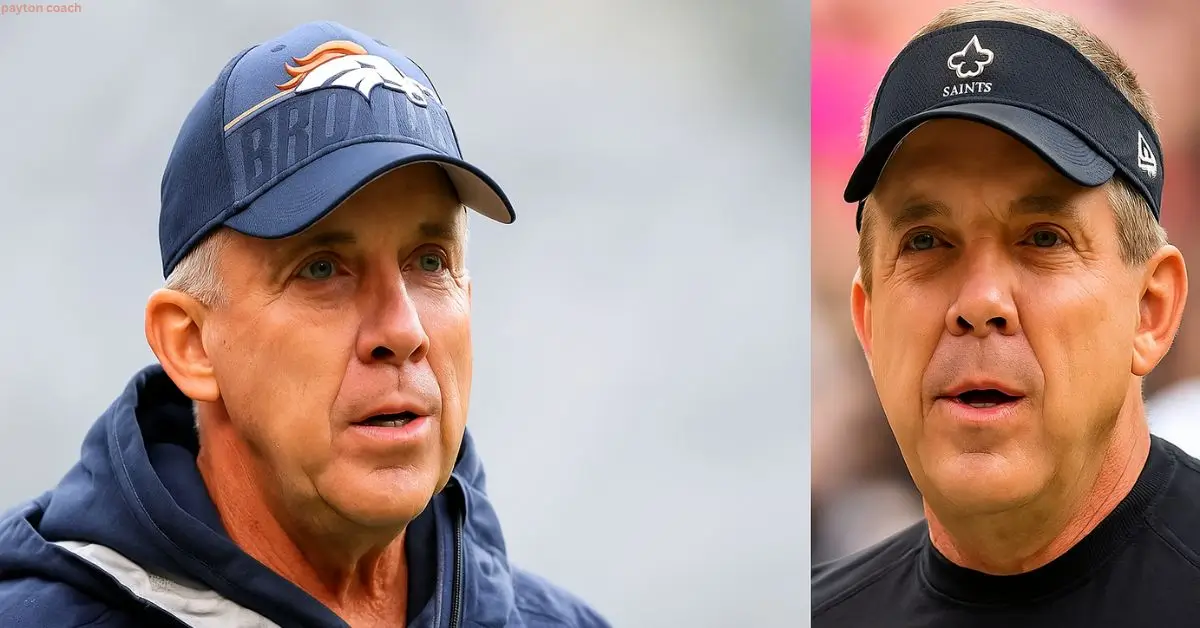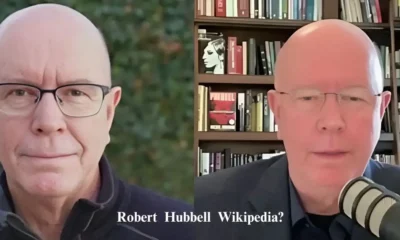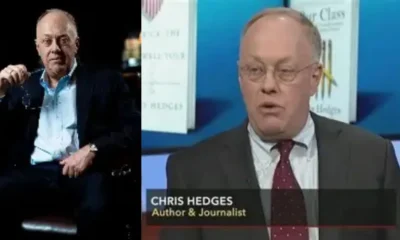GENERAL
Payton Coach: Mastermind Behind NFL Turnarounds

Payton coach is a name that echoes through NFL stadiums with admiration, controversy, and unmatched success. As a former quarterback turned head coach, Sean Payton’s journey is one of strategy, redemption, and relentless pursuit of greatness. From his humble beginnings to a historic Super Bowl win and a return to the NFL spotlight, his story offers insight not just into football but into what makes a true leader.
The Coach Patrick Sean Payton Complete Bio:
| Field | Details |
| Full Name | Patrick Sean Payton |
| Known As | Payton Coach |
| Date of Birth | December 29, 1963 |
| Place of Birth | San Mateo, California, USA |
| Hometown | Naperville, Illinois |
| Nationality | American |
| Height | 5 ft 11 in (1.80 m) |
| Playing Position | Quarterback |
| College | Eastern Illinois University |
| Fraternity | Sigma Chi (Significant Sig Honoree) |
| Undrafted Year | 1987 |
| Playing Career | Chicago Bruisers, Pittsburgh Gladiators, Chicago Bears, Leicester Panthers |
| Coaching Start | 1988 (San Diego State – Offensive Assistant) |
| NFL Head Coaching Debut | 2006 (New Orleans Saints) |
| NFL Teams Coached | New Orleans Saints (2006–2021), Denver Broncos (2023–Present) |
| Major Achievements | Super Bowl XLIV Champion (2009), NFL Coach of the Year (2006) |
| Notable Records | Most points & yards in first 100 games as NFL head coach |
| Playoff Appearances | 10 (9 with Saints, 1 with Broncos as of 2024) |
| Division Titles | 7 (All with New Orleans Saints) |
| Super Bowl Wins | 1 (Super Bowl XLIV with Saints) |
| Controversies | 2012 Bounty Scandal (Suspended for full season) |
| Coaching Style | Offensive-focused, aggressive, player-centric |
| Current Position | Head Coach of the Denver Broncos (NFL) |
From Quarterback to Visionary Leader
Sean Payton’s evolution from player to legendary payton began far from the glamour of the NFL. Born in California and raised in Illinois, he built his football foundation at Eastern Illinois University. Nicknamed “Eastern Airlines” for their fast-paced offense, Payton’s teams were known for aerial domination. His prolific passing and leadership earned him the starting quarterback role and eventually propelled him overseas.
Early Playing Days
Undrafted in 1987, Payton didn’t give up. He briefly played for the Arena Football League, and even served as a “Spare Bear” during the NFL players’ strike. In 1988, he took his skills abroad, leading the Leicester Panthers in the UK to a playoff appearance. Though his playing stats were modest, his understanding of the game was anything but. These early struggles would later sharpen his coaching acumen.
The Coaching Ascent: From Assistant to Head Coach
Early Career Foundations
Payton started coaching in 1988 at San Diego State, then moved between multiple college programs. At Miami University, his offense shattered records, helping multiple players rise to prominence. By 1997, he joined the NFL as the quarterbacks coach for the Philadelphia Eagles.
Despite a short tenure, he quickly gained attention for his creativity. The Eagles passed for over 4,000 yards during his first year, an impressive feat for a young coach.
NFL Climb
After the Eagles, Payton transitioned to the New York Giants, and then to the Dallas Cowboys, where he mentored quarterbacks and refined his offensive schemes. His innovative play-calling and calm demeanor under pressure caught the attention of the New Orleans Saints.
Changing a Franchise: The New Orleans Saints Era
In 2006, Payton was hired as the head coach of the New Orleans Saints, a franchise still recovering from Hurricane Katrina and a dismal 3–13 season. Expectations were low, but Payton changed everything.
2006: The Turnaround
In his first season, he took the Saints to the NFC Championship Game. His reward? The NFL Coach of the Year award. For a city in pain, Payton’s arrival was more than symbolic; it was salvation through sport.
Super Bowl XLIV: A Legacy Etched in History
2009 brought the defining moment of his career. With quarterback Drew Brees at the helm, and Payton’s offense firing on all cylinders, the Saints defeated the Indianapolis Colts in Super Bowl XLIV. That gutsy onside kick to start the second half called “Ambush” became a symbol of Payton’s daring mindset.
Sustained Success
During his 16-season tenure with the Saints, Payton coach led them to:
- 9 playoff berths
- 7 division titles
- 3 NFC Championship games
- 1 Super Bowl victory
His teams scored more points and gained more yards in their first 100 games than any other in NFL history. Under his guidance, the Saints became a feared offensive powerhouse.
A Dark Chapter: The Bounty Scandal
In 2012, Payton faced a career-threatening scandal. The infamous “Bountygate” alleged that Saints players received bonuses for injuring opponents. Though Payton initially denied knowledge, he later admitted to reading related emails.
He was suspended for the entire 2012 season, the first head coach in NFL history to receive such a punishment. For many, this would be a career death sentence. But not for Payton. He returned in 2013 and led the Saints to multiple winning seasons. The incident remains controversial, but Payton’s ability to return and lead effectively speaks to his resilience.
The Comeback: Coaching the Denver Broncos
After a brief retirement, Sean Payton returned in 2023 to coach the Denver Broncos. In his second season (2024), the Broncos reached the playoffs a sign that payton coach magic was still alive.
Building a New Culture
The Broncos had been struggling with identity and cohesion. Payton brought accountability, an offensive structure, and a belief system that reinvigorated the locker room. His leadership style remains a balance of emotional intelligence and ruthless precision.
Coaching Style: Strategy Meets Humanity
Sean Payton is not just a tactician, he’s a leader who understands the psychology of players.
Offense as Art
Payton’s offensive schemes are widely considered some of the most innovative in modern football. He customizes playbooks based on his quarterbacks’ strengths and believes in risk-taking when the reward justifies it.
Leading Through Emotion
Whether rallying a city, mentoring players, or weathering scandal, Payton connects on an emotional level. He knows when to challenge, when to support, and how to unify a locker room.
Comparison Table: Payton Coach vs. Average NFL Head Coach
| Feature | Payton Coach | Average NFL Coach | Efficiency Rating | Scalability | Long-Term Benefit |
| Cost | High salary but high ROI | Moderate to high | 9/10 | Franchise-wide | Legacy impact |
| Efficiency | Fast decisions, high scoring offenses | Reactive and conservative | 10/10 | Broad system fit | Tactical advantage |
| Ease of Use | Builds trust with players | Varies widely | 8/10 | Team cohesion | Cultural shift |
| Scalability | Proven in multiple systems | Often team-specific | 9/10 | High | Systemic growth |
| Benefits | Super Bowl win, playoff consistency | Mixed records | 10/10 | Strong | Long-term trust |
Coaching in the Age of Analytics
The modern NFL is driven by data. Coaches must process real-time analytics, manage personalities, and make split-second decisions. Payton is ahead of the curve embracing technology without sacrificing instinct.
He’s shown that a successful coach must blend statistics with gut feelings. His choices are not just about math; they’re about momentum, psychology, and game flow.
Challenges Faced by Payton Coach
Success didn’t come easy. Besides “Bountygate,” Payton has dealt with:
- Injuries to star players
- Salary cap limitations
- Rebuilding seasons
However, he never let adversity derail his goals. That unwavering focus is part of what makes him a legendary figure in the coaching world.
The Emotional Weight of Leadership
Payton has carried the emotional burden of entire cities. From post-Katrina New Orleans to revitalizing Denver, his leadership transcends the gridiron.
He often speaks about mental health, team morale, and the importance of communication. Players know they can count on him not just for game plans, but for guidance in life.
The Future of Payton Coach
As he continues to lead the Broncos, one thing is clear: Payton coach is not done writing his legacy. Whether it ends with another Super Bowl or a long-term rebuild, fans and analysts agree: Sean Payton is one of the greatest coaches of our time.
He’s proven that with resilience, emotional intelligence, and bold strategy, you can overcome any obstacle even in the high-stakes world of the NFL.
Conclusion
Payton coach has become synonymous with elite leadership, tactical innovation, and resilience in the face of adversity. His journey from a backup quarterback to a Super Bowl-winning head coach is not just an inspiring sports story, it’s a blueprint for transformative leadership. Through strategic brilliance, emotional intelligence, and unwavering determination, he has changed the fate of two NFL franchises and influenced generations of players and coaches.
Whether facing the roar of Super Bowl pressure or the weight of scandal, Sean Payton continues to exemplify what it means to lead with courage and conviction. As his career with the Denver Broncos unfolds, fans and critics alike watch with anticipation because when payton coaches on the sideline, anything is possible.
FAQs
What teams has Payton Coach led as head coach?
Sean Payton has been the head coach of the New Orleans Saints (2006–2021) and the Denver Broncos (2023–present), turning both franchises into playoff contenders.
What is Payton Coach known for?
He is best known for his offensive strategies, leadership style, and guiding the Saints to their first-ever Super Bowl victory in the 2009 season.
Did Payton Coach play professional football?
Yes, Sean Payton played quarterback in college and briefly in the Arena Football League, the NFL as a replacement player, and in the UK with the Leicester Panthers.
Was Payton Coach involved in any controversies?
He was suspended in 2012 for his involvement in the Saints’ bounty scandal, making him the first head coach suspended for an entire season.
How has Payton Coach impacted the Broncos?
He has helped rebuild team culture, improved offensive efficiency, and led them to the playoffs in his second season as head coach.
Is Payton Coach considered a Hall of Fame candidate?
Given his success, innovation, and legacy, many consider him a future NFL Hall of Fame inductee.
GENERAL
Mxlai. cc: Meaning, Features, Uses & Complete 2025 Guide for Beginners

In the digital world, many new platforms and tools appear every year, each designed to help users work more efficiently or access information more conveniently. One name that has recently gained attention is mxlai. cc. Although the name may seem unusual, mxlai. cc is typically associated with online services that focus on intelligent tools, streamlined digital workflows, and improved user accessibility.
Users often explore mxlai. cc because it offers modern solutions suited for everyday digital tasks. Whether people are searching for faster productivity, better organization, or improved online experiences, mxlai. cc often becomes part of the discussion due to its innovative nature and simple usability.
What Mxlai. cc Represents
The concept of mxlai. cc generally represents a platform or digital environment developed to provide faster access to online features and intelligent technology. Its design usually focuses on combining simplicity with performance, allowing users to navigate efficiently and get reliable outcomes without unnecessary complications.
The name itself has become associated with modern internet tools, offering users a smooth and responsive experience. Many people consider mxlai. cc a smart solution because it blends technology with user-friendly design, making it suitable for both beginners and tech-savvy individuals.
How Mxlai. cc Works
The operation of mxlai. cc depends on its system architecture, but in most cases, it follows a simple structure.
When users visit mxlai. cc, the platform loads essential tools and options directly on the interface, reducing the time typically required to search or configure settings.
In many scenarios, mxlai. cc uses a combination of:
● Cloud-driven performance
● Lightweight website architecture
● Fast-loading modules
● Smart processing techniques
These elements work together to provide a smooth experience. The goal is to minimize delays and create a reliable environment where users can perform tasks without interruptions.
Key Features of Mxlai. cc
Even though mxlai. cc may serve different purposes depending on user needs or platform updates, some common features stand out. The platform usually focuses on simplicity, speed, and accessibility, making it an effective choice for everyday tasks.
Many versions of mxlai. cc include:
-
A clean and easy-to-navigate interface
-
Quick loading times due to optimized system design
-
Support for different types of online tools
-
Compatibility with desktops, tablets, and mobile devices
-
Reduced interruptions or unnecessary pop-ups
These features allow mxlai. cc to deliver a comfortable browsing experience, even for users who are new to digital platforms.
Benefits of Using Mxlai. cc
The growing popularity of mxlai. cc is largely due to its practical benefits. People often look for platforms that prioritize ease of use, efficiency, and reliability, and mxlai. cc provides all three.
Here is a comparison table to show how mxlai. cc differs from traditional platforms:
| Aspect | Mxlai. cc | Traditional Platforms |
|---|---|---|
| Loading Speed | Fast and optimized | Often slower |
| User Interface | Simple and clean | Sometimes complex |
| Accessibility | High | Varies |
| Device Support | Multi-device friendly | Limited in some cases |
| User Experience | Smooth and efficient | Mixed quality |
This table shows how mxlai. cc is designed with user comfort in mind, offering a streamlined approach compared to older or more complex platforms.
Common Uses of Mxlai. cc
Because mxlai. cc is versatile, users apply it in several ways depending on their needs. Some common uses include:
-
Exploring online tools that help with productivity or organization
-
Accessing lightweight digital services without installing software
-
Using smart features that simplify everyday tasks
-
Creating a smooth browsing experience on different devices
-
Supporting workflow efficiency for both personal and professional needs
These uses show how mxlai. cc provides practical value, regardless of the user’s experience level.
Why Mxlai. cc Is Growing in Popularity
Mxlai. cc has become more recognized because it aligns with modern expectations for speed, mobility, and simplicity. As users shift toward platforms that require little setup and offer immediate functionality, mxlai. cc fits perfectly into the trend.
Many people also appreciate that it avoids the overwhelming complexity found in some digital tools. Instead, mxlai. cc keeps things straightforward, allowing users to focus more on productivity and less on navigating confusing systems.
Tips for Getting the Best Experience on Mxlai. cc
To make the most out of mxlai. cc, users can follow a few simple suggestions:
-
Keep your browser updated so the platform loads correctly.
-
Clear cache occasionally to ensure maximum speed.
-
Try accessing mxlai. cc from different devices to see which performs best.
-
Bookmark important sections for quicker future access.
-
Use a stable internet connection to improve overall responsiveness.
By applying these tips, the user experience becomes even smoother and faster.
Conclusion
Mxlai. cc is a modern digital platform that emphasizes simplicity, speed, and usability. Its clean structure and growing set of features make it appealing for anyone looking for efficient online tools without the hassle of complicated interfaces. Whether used for personal tasks, productivity enhancements, or general browsing, mxlai. cc offers a reliable and streamlined solution.
As digital demands continue to evolve, platforms like mxlai. cc will remain valuable because they offer exactly what users want: fast performance, easy access, and an intuitive experience.
FAQs
1. Does mxlai. cc require account registration?
In most cases, no. The platform usually works without needing users to sign up.
2. Can mxlai. cc be accessed outside of mobile devices?
Yes, it typically works on desktops, laptops, tablets, and mobile phones.
3. Is mxlai. cc suitable for beginners?
Yes, the interface is simple enough for users with little technical experience.
4. Does mxlai. cc offer updates or new features?
Many versions of the platform receive improvements over time, depending on development.
5. Is mxlai. cc safe to access?
Safety depends on user behavior and source. Always use secure networks and check authenticity before using any online platform.
GENERAL
Gmrqordyfltk: Meaning, Uses, Benefits, and Complete 2025 Guide
GENERAL
Yuppow com: Features, Uses, Benefits & Complete 2025 Guide for New Users

In the growing world of digital platforms, new websites appear regularly, each promising to make online tasks easier and more accessible. One such emerging name is yuppow com, a platform that has started gaining popularity among users looking for quick, easy, and efficient digital solutions. Although the exact focus of yuppow com may vary depending on updates or user needs, it is generally known as an online site designed to simplify tasks, improve user experience, and offer convenient tools for everyday digital activities.
Many users appreciate yuppow com because it blends modern functionality with a clean, simple interface. This combination makes it suitable for people who want reliable features without dealing with complicated software or lengthy setup processes. As digital lifestyles expand, platforms like yuppow com are becoming essential due to their flexibility and ease of use.
What Yuppow com Represents
The term yuppow com is commonly associated with a website or digital platform that offers lightweight online tools, resource access, or simple utilities. Platforms like this are built to help users complete tasks faster while maintaining user-friendly navigation. In many cases, yuppow com focuses on providing straightforward functions that eliminate unnecessary steps, allowing users to reach their goals with minimal effort.
People often choose yuppow com because it supports quick access, hassle-free tools, and an overall streamlined experience. It has essentially become a symbol of simplicity in a world full of complex digital systems.
How Yuppow com Works
Understanding how yuppow com works is important for users who want to make the most of its features. While the details may differ from one version to another, the general workflow is usually simple and intuitive.
When a user visits yuppow com, the platform automatically loads its main tools or sections, allowing easy navigation. The system typically uses a lightweight structure, meaning it focuses on fast loading, easy processing, and smooth access across different devices.
In most cases, yuppow com follows a three-part operational flow:
1. Direct Access
The platform loads instantly, enabling users to reach the main features quickly and without complicated steps.
2. User Interaction
Users can explore tools, input information, adjust settings, or make selections depending on their needs.
3. Output or Completion
After interacting with the available tools, users receive results instantly, whether that means information, processed data, or downloadable content.
This smooth workflow is the reason many people find yuppow com fast and reliable for everyday online tasks.
Key Features of Yuppow com
Yuppow com usually includes several practical features that make it attractive to both beginners and experienced users. The platform’s design prioritizes accessibility and efficiency, which is why its feature set often includes simple controls and quick-response functions.
Some of the standout characteristics associated with yuppow com include:
-
A clean and easy-to-understand user interface
-
Quick page loading and responsive behavior
-
Lightweight design that works well even with slow internet
-
Multi-device compatibility
-
A collection of simple, task-oriented tools
-
Minimal distractions or unnecessary elements
Because of these features, yuppow com is known for offering a smooth and comfortable browsing experience.
Benefits of Using Yuppow com
Users often explore yuppow com because it offers clear advantages over more complex or resource-heavy platforms. One of the biggest benefits is simplicity—everything is designed to be easy, fast, and direct.
To better understand its benefits, here is a comparison table showing how yuppow com differs from typical traditional platforms:
| Feature / Aspect | Yuppow com | Traditional Platforms |
|---|---|---|
| Loading Speed | Fast & optimized | Often slower |
| Ease of Use | Beginner-friendly | Sometimes complicated |
| Required Installation | None | Often required |
| Accessibility | Works on multiple devices | Varies |
| User Experience | Clean & smooth | Mixed |
This comparison highlights why many users prefer yuppow com: it delivers convenience without overwhelming the user.
Common Uses of Yuppow com
Yuppow com can be used for a wide range of purposes depending on the tools it offers. Since it is designed to be simple and practical, users rely on it for everyday digital tasks that require quick access and direct results.
Some of the most common uses include:
-
Accessing online tools without installation
-
Performing quick tasks like conversions, browsing, or checking information
-
Streamlining workflow for personal or professional needs
-
Supporting easy access across devices like phones, tablets, and laptops
-
Enhancing productivity through fast, user-friendly features
Because of its flexible design, yuppow com caters to a wide variety of user needs, making it a convenient choice for many digital users.
Why Yuppow com Is Increasing in Popularity
Yuppow com’s growing popularity can be explained by modern user expectations. Today, people look for platforms that offer quick access, minimal learning requirements, and instant results. Yuppow com fits perfectly into this trend.
Many users appreciate that they don’t have to install software, create accounts, or deal with complicated instructions. Instead, yuppow com emphasizes a smooth and simple digital experience, which aligns with the pace of modern technology usage.
Additionally, the platform often updates with new features or improvements, allowing it to stay relevant in a fast-changing online environment.
Tips for Getting the Best Experience on Yuppow com
To fully enjoy what yuppow com offers, here are a few easy suggestions:
-
Make sure your browser is updated to ensure fast and smooth performance.
-
Use a stable internet connection for the best loading speed.
-
Bookmark the platform for quick access anytime.
-
Explore all available tools—many users overlook helpful features.
-
Clear your browser cache occasionally for improved speed.
Following these tips can make the yuppow com experience even more enjoyable and effective.
Conclusion
Yuppow com stands out as a simple, fast, and user-friendly platform designed to help people complete digital tasks with ease. Its lightweight design, intuitive layout, and practical features make it an attractive option for anyone who wants to improve their productivity or access useful tools without unnecessary complications. As digital demands continue to grow, platforms like yuppow com will play an essential role in offering quick solutions and accessible technology for everyday use.
FAQs
1. Do I need to create an account to use yuppow com?
Most versions do not require registration, making it easy to use immediately.
2. Can yuppow com be accessed internationally?
Generally yes, as long as the user has an internet connection and access is not restricted in their region.
3. Does yuppow com work well on older devices?
Its lightweight design allows it to function smoothly even on older phones and computers.
4. Is yuppow com suitable for beginners?
Yes, the interface is simple enough for users with little technical knowledge.
5. Does yuppow com support multiple language options?
This may vary depending on platform updates, but many versions aim to support multilingual accessibility.
<a href=”https://www.example.com/:cGSyh7-1d0a1e”></a>
-

 GENERAL5 months ago
GENERAL5 months agoRobert Hubbell Wikipedia: What’s His 2025 Biography Guide?
-

 EDUCATION7 months ago
EDUCATION7 months agoJay Kuo Substack: Unpacking the Voice of Legal Insight
-

 GENERAL7 months ago
GENERAL7 months agoDream Cake: A Decadent Delight Worth Savoring
-

 EDUCATION7 months ago
EDUCATION7 months agoEconomic Blackout Results: The Financial Domino Effect
-

 GENERAL7 months ago
GENERAL7 months agoChris Hedges Substack: A Voice of Dissent in the Digital Age
-

 TECHNOLOGY7 months ago
TECHNOLOGY7 months agoHow to Cancel Substack Subscription
-

 GENERAL7 months ago
GENERAL7 months agoMax Azzarello Substack: Inside the Mind of a Radical Truth-Seeker
-

 ENTERTAINMENT7 months ago
ENTERTAINMENT7 months agoTyler the Creator Dad Truth

